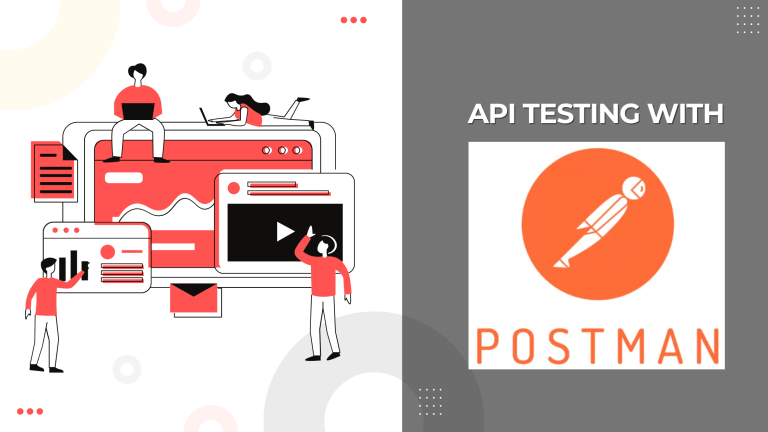Supercharge Your API Testing With These Postman Hacks

Table of Contents
Mastering Postman Collections for Organized API Testing
Effective API testing with Postman starts with organization. Postman collections provide a powerful way to group related API requests, improving reusability and making your workflow significantly more manageable. Well-structured collections are the foundation of efficient API testing.
Creating and Structuring Efficient Collections
A well-organized collection simplifies API testing and enhances collaboration. Think of it as your API testing project's central hub. Consider these best practices:
-
Naming Conventions: Use clear, consistent naming conventions for collections and requests. For example,
GET /users,POST /products, etc. This makes it easier to find specific requests within your collection. -
Folder Structures: Organize requests into folders based on API endpoints or functionalities. For instance, a collection for a user authentication API might have folders like "User Registration," "User Login," and "User Profile." This improves navigation and comprehension.
-
API Type Organization: Tailor your collection structure to the type of API you're testing. REST APIs might be organized by resource and HTTP method, while GraphQL APIs could be grouped by query type. SOAP APIs often benefit from a structure based on their service operations.
-
Descriptions and Tags: Add detailed descriptions to your requests and collections explaining their purpose, parameters, and expected responses. Utilize tags to categorize requests based on functionality or priority, enabling quick searchability.
Utilizing Collection Variables for Parameterization
Collection variables are a key to efficient API testing with Postman. They enable you to define parameters once and reuse them across multiple requests. This significantly reduces redundancy and makes it easier to adapt your tests for different environments or scenarios.
-
Environment Variables: Define variables specific to an environment (e.g., development, staging, production). This lets you switch between environments effortlessly by simply changing the environment.
-
Global Variables: Use global variables for values that remain consistent across all environments and collections.
-
Dynamic Variable Generation: Employ pre-request scripts to generate dynamic variables based on previous requests or external data sources. This allows for more complex test scenarios.
-
Managing Variables: Efficiently manage variables across multiple requests and environments to streamline your API testing workflow.
Leveraging Postman's Advanced Features for Enhanced Testing
Postman provides sophisticated features beyond basic request execution to enhance your API testing capabilities. Mastering these features unlocks significant productivity gains.
Harnessing the Power of Pre-request and Test Scripts
Pre-request and test scripts add automation and validation to your API testing with Postman. These scripts use JavaScript to automate tasks before sending a request (pre-request) and to verify the response (test).
-
JavaScript in Scripts: Utilize JavaScript to manipulate data, generate dynamic parameters, perform complex assertions, and more. This provides granular control over the testing process. Examples include parsing JSON responses, performing calculations, and validating specific data points.
-
Assertion Libraries: Leverage popular assertion libraries within your tests (e.g., Chai, Jest) to improve readability and create robust validation checks.
-
Postman Scripting Documentation: Refer to the official Postman documentation for detailed guidance on scripting: [Link to Postman Scripting Docs] (Replace with actual link)
Effectively Utilizing Postman's Monitoring and Reporting Features
Postman's monitoring feature allows you to schedule automated API health checks, ensuring your APIs remain functional. Generating reports provides valuable insights into API performance and stability.
-
Automated API Health Checks: Set up automated tests that run regularly, alerting you to potential issues promptly. This proactive approach prevents unexpected downtime.
-
Performance Reporting: Generate detailed reports on API response times, error rates, and other key metrics to identify performance bottlenecks and areas for improvement.
-
Alerting and Notifications: Configure alerts for failed tests to receive immediate notifications of critical issues. This ensures rapid response times to resolve problems.
-
Report Formats: Generate reports in various formats like CSV and JSON for easy integration with your existing systems.
Streamlining Your API Workflow with Postman Integrations and Extensions
Integrate Postman with your existing tools and enhance its functionalities using extensions. This streamlines your overall API testing workflow.
Integrating with CI/CD Pipelines
Integrate Postman into your CI/CD pipelines to automate API testing as part of your software development lifecycle. This ensures API quality and reduces manual effort.
-
CI/CD Integration: Integrate Postman with tools like Jenkins, GitLab CI, or Azure DevOps to automate collection runs as part of your build process.
-
Newman: Use Newman, Postman's command-line collection runner, to execute collections directly from your CI/CD environment. This facilitates seamless integration into your automated testing pipeline.
-
Automation Steps: Learn the specific steps for integrating Postman with your chosen CI/CD platform for optimized API testing.
Exploring Useful Postman Extensions
Postman's extension marketplace offers a range of extensions to enhance its functionality. These extensions provide added features and streamline various tasks.
-
Code Generation: Use extensions to generate client-side code in various programming languages (e.g., JavaScript, Python).
-
Mocking: Employ extensions for API mocking to simulate backend responses, facilitating frontend development even when the backend isn't ready.
-
Other Enhancements: Explore extensions that offer additional features such as improved reporting, enhanced security testing, or integration with other tools.
-
Postman Extension Marketplace: Discover new extensions and enhance your API testing capabilities: [Link to Postman Extension Marketplace] (Replace with actual link)
Conclusion: Unlocking API Testing Efficiency with Postman
By implementing the Postman hacks discussed in this article, you can dramatically improve your API testing workflow. Mastering Postman collections, leveraging advanced features like pre-request and test scripts, and utilizing integrations and extensions unlocks significant efficiency and productivity gains. Continuous learning and exploration of Postman's capabilities are key to developing advanced API testing strategies. Implement these techniques to supercharge your API testing workflows, improve your API testing using Postman, and master API testing with Postman today! Optimize your Postman API testing and experience the difference.

Featured Posts
-
 Unlock Postmans Full Potential Expert Level Techniques
May 19, 2025
Unlock Postmans Full Potential Expert Level Techniques
May 19, 2025 -
 Ufc 313 Mairon Santos Seeks Knockout Win To Fund Babys Needs
May 19, 2025
Ufc 313 Mairon Santos Seeks Knockout Win To Fund Babys Needs
May 19, 2025 -
 Enhance Your Api Testing With These Postman Tips
May 19, 2025
Enhance Your Api Testing With These Postman Tips
May 19, 2025 -
 Poitiers Formation Universitaire Pour Archivistes
May 19, 2025
Poitiers Formation Universitaire Pour Archivistes
May 19, 2025 -
 Pote Giortazoyme Ton Ierosolymon T Heofilo Imerominia Kai Plirofories Gia Ta Onomastiria
May 19, 2025
Pote Giortazoyme Ton Ierosolymon T Heofilo Imerominia Kai Plirofories Gia Ta Onomastiria
May 19, 2025
